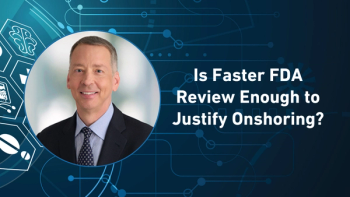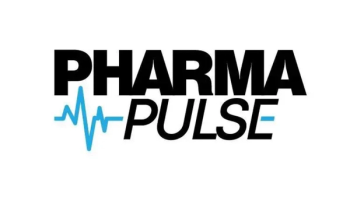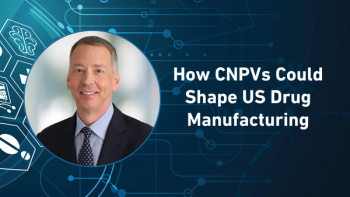
Preparing for CGT Launches
In the first part of his Pharma Commerce video interview, Mark Sawicki, PhD, Cryoport Systems’ president and CEO, discusses both the successes and challenges in commercializing cell and gene therapies.
In a video interview with Pharma Commerce, Mark Sawicki, PhD, Cryoport Systems’ president and CEO, discusses the evolving state of global cell and gene therapy commercialization. Sawicki highlighted significant progress in key operational areas, noting that companies are now better prepared for commercial launches than in the past. Early challenges in manufacturing readiness have been largely resolved, with organizations now demonstrating clear strategies, scalable capacity, and well-vetted supply chains. Regulatory hurdles have also been substantially addressed, and most companies are effectively engaging primary launch sites, especially major academic medical centers, ensuring they are trained and ready for product deployment.
However, several persistent challenges remain. Reimbursement, particularly in Europe, continues to be a major hurdle—even for mature companies with marketed therapies. Another notable issue is physician education, especially outside of large teaching hospitals. Many community-based physicians lack a deep understanding of cell and gene therapies, creating a barrier to broader adoption.
Sawicki also pointed to community care engagementas an area needing attention. While major centers are prepared, regional and community sites are lagging in terms of readiness and support. According to available market data, current therapies are reaching only about 20% of the addressable patient population in the United States and Europe, with even lower uptake globally.
Finally, standardization of processes, particularly across clinical sites and within supply chain systems, remains an issue. Inconsistent procedures and infrastructure gaps at these levels hinder the ability of sites to fully support these complex therapies. Addressing these shortcomings will be critical to expanding access and realizing the full potential of cell and gene therapy worldwide.
Sawicki also comments on how supply chain expectations have shifted amid tighter funding, FDA leadership changes and evolving CMC standards; the critical role of cryopreservation, real-time logistics data and AI-enabled fulfillment in protecting product integrity and patient outcomes; what pharma leaders can borrow from CGT’s operational playbook to improve resilience across therapeutic areas; and much more.
A transcript of his conversation with PC can be found below.
PC: What are commercialization teams doing well—and where are they falling short—when it comes to preparing for global cell and gene therapy launches?
Sawicki: If you're looking from a clinical to commercial standpoint, if you look at the first launches the channel, they had a lot of challenges early on. They had a manufacturing readiness issue, which has largely been addressed. Most companies, as they go to launch today, have a defined strategy. They have the capacity to be able to support the commercial launch. They've vetted out their supply chain sufficiently, they understand the challenges associated with the supply chain around cell and gene distribution. They also have largely addressed most of the regulatory challenges associated with the cell and gene space, and they typically do a good job in engaging the primary sites—the larger teaching hospitals—and getting them online, trained, and ready to support that commercial launch activity.
The areas that they still are challenged in is reimbursement. Reimbursement is always an issue. In particular, ex-US reimbursement in Europe. Even mature companies with commercial products are still struggling with reimbursement challenges associated with it. There is also physician education outside of the larger teaching hospitals. If you go beyond that, it’s that small subset of physicians that are very comfortable and understand the benefits of cell and gene, and below that, there's an education issue: a large number of physicians that are oncologists and others, especially outside of those large teaching hospitals, just don't have a fundamental understanding of cell and gene, and there's still a challenge.
Community care engagement is still a challenge as well, pushing out into those more regional sites. If you look at the data in the market, they're currently only hitting about 20% of addressable patient population in the US and Europe, with the rest the world much lower than that, and standardization is still an issue in particular. The support mechanism and the supply chain mechanisms—and standardization— is a challenge for them, in particular for the clinical sites to be able to support these products. I would say those are probably the biggest elements today.
Newsletter
Stay ahead in the life sciences industry with Pharmaceutical Commerce, the latest news, trends, and strategies in drug distribution, commercialization, and market access.





